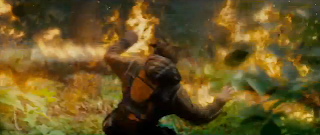In our Thriller movie the key elements we are going to be using some codes and conventions to help build up suspense before the film begins.
- Fast paced quick cuts - We know that this is an element that the audience will be used to and is effective for building tension and suspense in a film.
- Mirrors - Mirrors are another commonly used convention in a thriller. The connotations of mirrors are reflection, double meanings and tricks on the audience. We are going to use mirrors in our opening to show the fractured personality of our character and to build mystery about his identity.
- Black and white CCTV footage - This will allow us to create a dark and eerie atmosphere at the same time CCTV footage has connotations of reality making the film feel more real and creepy.
- Non diegetic music - We are going to use non diegetic music to allow the audience to identify that is something not right, so that we can build suspense for them and make them aware that something bad is about to happen.



















